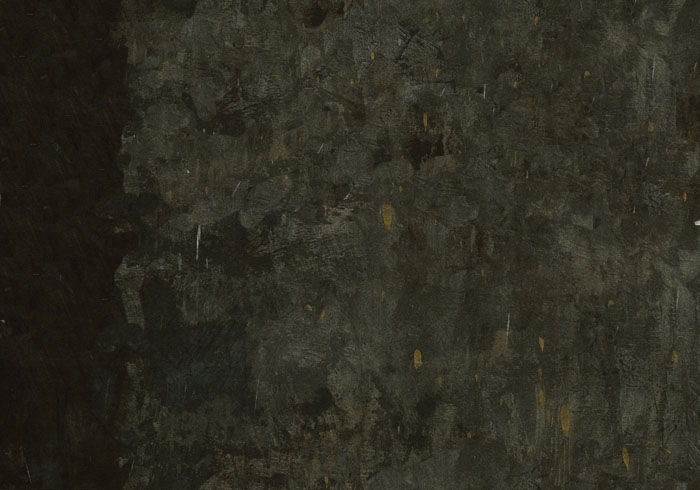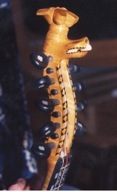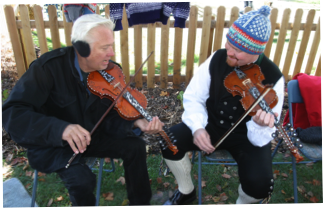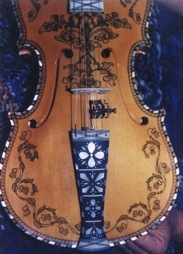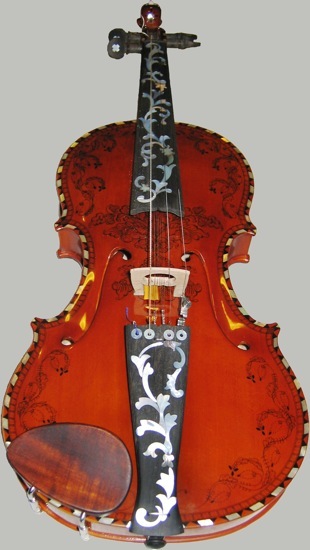The Hardanger fiddle originated in southwest Norway, with the earliest known fiddle dating back to 1651. This first known Hardanger fiddle featured only six strings altogether, and was created by Ole Jonsen Jaastad of Hardanger, Norway. The fiddles varied in sound and design according to the region of Norway in which
they were created. Originally the instrument had
a rounder, narrower body. Around 1850, the
modern layout with a body much like a
violin became the norm.
The Hardingfele, in modern designs, is used
mainly in the southwest part of Norway,
whereas the ordinary violin, called ‘flatfele’
(flat fiddle), or ‘vanlig fele’ (common fiddle)
is found elsewhere. The Hardingfele is the
principal dance instrument, and is accompanied
by rhythmic loud foot stomping. It was also
traditional for the fiddler to lead the bridal
procession to the church at many weddings.
The instrument often is highly decorated, with a carved head of an animal (usually a lion or dragon) or the head of a maiden, extensive mother of pearl inlay on the tailpiece and fingerboard, and black ink decorations called ‘rosing’ on the body of the instrument.

